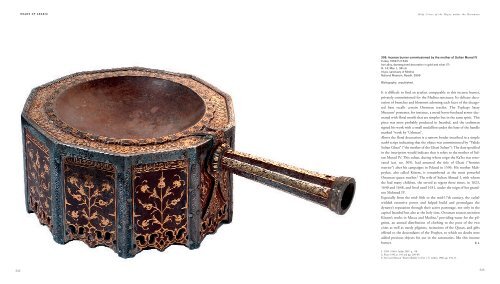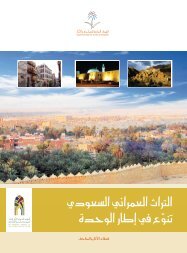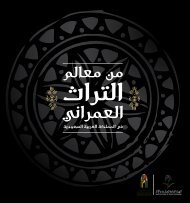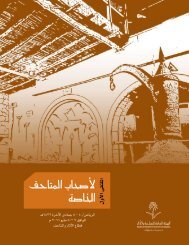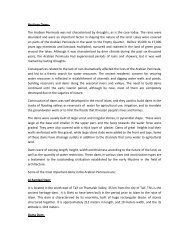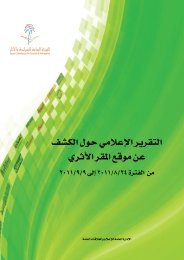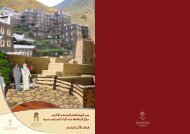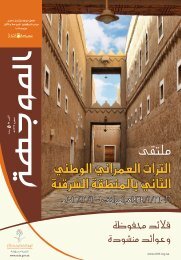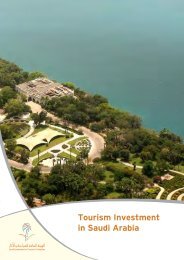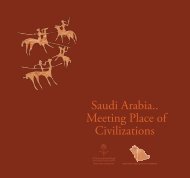Roads of Arabia
Roads of Arabia
Roads of Arabia
You also want an ePaper? Increase the reach of your titles
YUMPU automatically turns print PDFs into web optimized ePapers that Google loves.
34 Arabie US p522-545_BAT.qxd 23/06/10 21:30 Page 542<br />
ROADS OF ARABIA<br />
Holy Cities <strong>of</strong> the Hijaz under the Ottomans<br />
308. Incense burner commissioned by the mother <strong>of</strong> Sultan Murad IV<br />
Turkey 1059 H./1649<br />
Iron alloy, damasquined decoration in gold and silver (?)<br />
H. 14; Max. L. 38 cm<br />
Hujra, sanctuary <strong>of</strong> Medina<br />
National Museum, Riyadh, 2999<br />
Bibliography: unpublished.<br />
It is difficult to find an artefact comparable to this incense burner,<br />
privately commissioned for the Medina sanctuary. Its delicate decoration<br />
<strong>of</strong> branches and blossoms adorning each facet <strong>of</strong> the decagonal<br />
base recalls certain Ottoman textiles. The Topkapı Saray<br />
Museum 1 possesses, for instance, a metal horse-forehead armor decorated<br />
with floral motifs that are simpler but in the same spirit. This<br />
piece was most probably produced in Istanbul, and the craftsman<br />
signed his work with a small medallion under the base <strong>of</strong> the handle<br />
marked “work by ‘Uthman”.<br />
Above the floral decoration is a narrow border inscribed in a simple<br />
naskh script indicating that the object was commissioned by “Valide<br />
Sultan Ghazi” (“the mother <strong>of</strong> the Ghazi Sultan”). The date specified<br />
in the inscription would indicate that it refers to the mother <strong>of</strong> Sultan<br />
Murad IV. This sultan, during whose reign the Ka‘ba was renovated<br />
(cat. no. 305), had assumed the title <strong>of</strong> Ghazi (“frontier<br />
warrior”) after his campaigns in Poland in 1596. His mother Mahpeyker,<br />
also called Kösem, is remembered as the most powerful<br />
Ottoman queen mother. 2 The wife <strong>of</strong> Sultan Ahmad I, with whom<br />
she had many children, she served as regent three times, in 1623,<br />
1640 and 1648, and lived until 1651, under the reign <strong>of</strong> her grandson<br />
Mehmed IV.<br />
Especially from the mid-16th to the mid-17th century, the valide<br />
wielded extensive power and helped build and promulgate the<br />
dynasty’s reputation through their active patronage, not only in the<br />
capital Istanbul but also at the holy sites. Ottoman sources mention<br />
Kösem’s works in Mecca and Medina, 3 providing water for the pilgrims,<br />
an annual distribution <strong>of</strong> clothing to the poor <strong>of</strong> the two<br />
cities as well as needy pilgrims, recitations <strong>of</strong> the Quran, and gifts<br />
<strong>of</strong>fered to the descendants <strong>of</strong> the Prophet, to which no doubt were<br />
added precious objects for use in the sanctuaries, like this incense<br />
burner. C. J.<br />
1. TSM 1/1445, Aydin 2007, p. 118.<br />
2. Pierce 1993, p. 105 and pp. 208–09.<br />
3. See Cavid Baysun “Kösem Walide” in EI2, t. V, Leiden, 1986, pp. 270–71.<br />
542<br />
543


